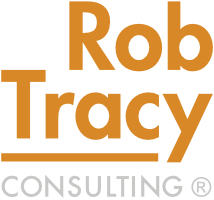I consider sales & operations planning (S&OP) to be a core discipline for manufacturers. When done correctly, the S&OP creates a shared perspective of the sales forecast, production capacity, customer lead times, and the projected financial performance of the business. It creates a unified set of actions and common objectives, and it builds harmony between sales and operations – two groups that have a predisposition to be at odds with each other.
Misconceptions of S&OP
However, some organizations believe that S&OP won’t work for them. Three common concerns are:
- Customer demand is too spikey (a technical term).
- Lead times are too short to allow longer-term planning.
- The sales team can’t accurately predict future bookings.
On one level, each of these carries the scent of an excuse. They are easy cop-outs when performance is poor. Just blame one of these three.
That said, there is undoubtedly some validity to the challenges. A fuzzy crystal ball makes planning more difficult, but that is the reality for most manufacturers. Frankly, part of our job as leaders is to look into that fuzzy crystal ball and make wise, educated predictions of the future.
Looking past the forecast’s imperfections, I believe that the desire for granularity and specificity is a signal of a misunderstanding of the purpose of the S&OP. It suggests some people view the S&OP as merely a longer-term production schedule.
The S&OP is not the same as a production schedule.
What is S&OP
The S&OP is a mid-range plan, usually three months or so, and the purpose of the plan is to align the sales forecast with the operations plan, which can then feed the company’s financial projection. Companies choose a three-month horizon because:
- It’s far enough into the future to allow operations to react (e.g., hire and train people).
- It’s short enough to allow sales to have a reasonable prediction of bookings, at least at an aggregate level.
For this kind of planning, we need data that is directionally correct. The precision will get dialed in as the time horizon moves closer and the forecast turns into actual orders. I am satisfied when the sales organization provides a forecast that says, “In 3 months, we anticipate that bookings will be 10% higher than where we are today”. If they can break it down by product line or customer, that’s great, but it’s not a requirement.
Setting Direction with S&OP
Once operations know that they will need to produce 10% more, they can do the work of figuring out how to make it a reality. For example, they may decide that the best path forward is to run a little overtime as needed to meet short-term demand and then wait to see the forecast next month. At that point, if it looks like bookings will continue to rise, they will hire additional workers.
With practice and intentionality, the models for forecasting and production capacity can become more sophisticated, but those are the fine-tuning dials. Simple models and math can get most of the job done.
We must also remember that choosing not to plan capacity is a choice unto itself. In times of rising demand, like many manufacturers are experiencing today, it is likely to result in being very late to the party. This can lead to long lead times and poor on-time delivery.
I encourage you to create an S&OP process. It may be a little rocky and rough at first, but even a rough plan is better than no plan at all. If you’d like to discuss how S&OP could help your business, please drop me a note at rob@robtracy.net
